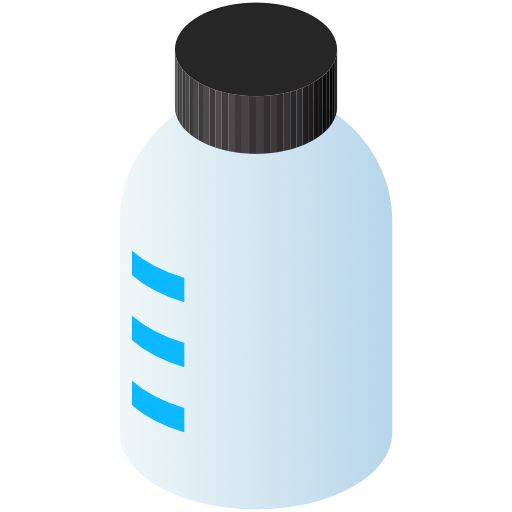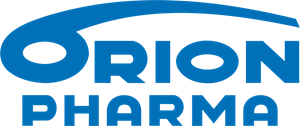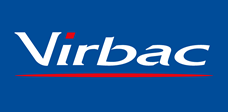Combination therapy
No results were found for your selected species
Mometamax Ultra
Active substance
ATC code
Species
Dogs
Indications
Treatment of acute otitis externa or acute exacerbation of recurrent otitis externa caused by mixed bacterial and fungal infections with Staphylococcus pseudintermedius and Malassezia pachydermatis.
Dose to be administered and administration route
Auricular use.
Single treatment.
The recommended dosage is a single dose of 0.8 ml per infected ear.
The maximum clinical response may not be seen until 28 to 42 days after administration.
Instructions for use:
The veterinary medicinal product should be administered only by veterinarians or by trained personnel under close veterinary supervision.
Clean and dry the external ear canal before administering the veterinary medicinal product.
The veterinary medicinal product is preservative-free and should be handled using clean technique.
 Before first use, shake the bottle vigorously for 15 seconds. Unwrap the syringe with the adapter attached. Remove the cap from the bottle and insert the adapter by pressing it firmly into the top of the bottle using the attached syringe. Follow steps 1. to 5. of the dosing instructions.
Before first use, shake the bottle vigorously for 15 seconds. Unwrap the syringe with the adapter attached. Remove the cap from the bottle and insert the adapter by pressing it firmly into the top of the bottle using the attached syringe. Follow steps 1. to 5. of the dosing instructions.
1.  Invert the bottle and draw up 0.8 ml per ear.
Invert the bottle and draw up 0.8 ml per ear.
2. Return the bottle to an upright position and remove the syringe from the adapter.
3. Leave the adapter in place and replace the cap on the bottle.
4.  Place the tip of the syringe at the entrance of external ear and administer the 0.8 ml dose. The applied dose will flow into the ear canal.
Place the tip of the syringe at the entrance of external ear and administer the 0.8 ml dose. The applied dose will flow into the ear canal.
5. After application, the ear can be massaged gently to ensure distribution of the veterinary medicinal product throughout the ear canal. Following dosing, the head should be restrained for approx. 2 minutes to prevent shaking and dislodging of veterinary medicinal product.
Use a new syringe for each infected ear. Shake the bottle vigorously for 15 seconds before each use. Remove the cap. Insert the syringe tip into the adapter. Follow steps 1 to 5 of the dosing instructions.
It is recommended not to repeat ear cleaning for at least 28 days after administration unless clinically indicated. Care should also be taken to avoid water entering the ear canal during this period. For this reason, dogs should not be bathed nor allowed to swim until confirmation of clinical cure 28-42 days after treatment.
Dogs should be re-examined 28-42 days after veterinary medicinal product administration to assess response to treatment. After confirmation of clinical resolution, the ears should be cleaned to remove any remaining debris or residual veterinary medicinal product.
Adverse reactions
Dogs:
No adverse events related to treatment were observed in clinical trials.
Reporting adverse events is important. It allows continuous safety monitoring of a veterinary medicinal product. Reports should be sent, preferably via a veterinarian, to either the marketing authorisation holder or the national competent authority via the national reporting system. See the package leaflet for respective contact details.
Dispensing
POM-V - Prescription Only Medicine – VeterinarianEMA Categorisation
SUMMARY OF PRODUCT CHARACTERISTICS
1. NAME OF THE VETERINARY MEDICINAL PRODUCT
Mometamax Ultra ear drops suspension for dogs
2. QUALITATIVE AND QUANTITATIVE COMPOSITION
Active substances:
Each dose (0.8 ml) contains:
Gentamicin sulfate equivalent to 6880 IU gentamicin (6.88 mg)
Posaconazole 2.08 mg
Mometasone furoate monohydrate equivalent to 1.68 mg mometasone furoate
Excipients:
For the full list of excipients, see section 6.1.
3. PHARMACEUTICAL FORM
Ear drops, suspension.
Smooth, uniform, white to off-white, viscous suspension.
4. CLINICAL PARTICULARS
4.1 Target species
Dogs
4.2 Indications for use, specifying the target species
Treatment of acute otitis externa and acute exacerbation of recurrent otitis externa caused by mixed infections of susceptible strains of bacteria sensitive to gentamicin (Staphylococcus pseudintermedius) and fungi sensitive to posaconazole (Malassezia pachydermatis).
4.3 Contraindications
Do not use in cases of hypersensitivity to the active substances or to any of the excipients.
Do not use if the eardrum is perforated.
Do not use in pregnant or breeding animals.
Do not use concurrently with substances known to cause ototoxicity.
Do not use in dogs with generalised demodicosis.
4.4 Special warnings for each target species
Ears must be cleaned before administration of the product. Do not repeat ear cleaning unless clinically indicated until 28 days after administration. Compatibility with ear cleaners, other than saline solution, has not been demonstrated. Antimicrobial activity may be reduced by low pH and the presence of pus and/or debris.
Bacterial and fungal otitis is often secondary in nature. The underlying cause should be identified and treated.
Water should not be allowed to enter the external ear canal of treated dogs for 28 days.
Cross-resistance has been shown between gentamicin and antimicrobial(s) in the same related class in the target pathogen. Use of the product should be carefully considered when susceptibility testing has shown resistance to aminoglycosides because its effectiveness may be reduced. 4.5 Special precautions for use
Special precautions for use in animals
The safety of the product has not been established in dogs less than 3 months of age or weighing less than 2.8 kg.
Before the veterinary medicinal product is applied, the external auditory canal must be examined thoroughly to ensure that the ear drum is not perforated, in order to avoid the risk of transmission of the infection to the middle ear and to prevent damage to the cochlear and vestibular apparatus.
This antimicrobial combination should only be used where diagnostic testing has indicated the need for simultaneous administration of each of the active substances.
Use of the veterinary medicinal product deviating from the instructions given in the Summary of Product Characteristics (SPC) may increase the prevalence of bacteria resistant to gentamicin and fungi resistant to posaconazole and may decrease the effectiveness of treatment with other antibiotics and antifungal agents.
Whenever possible the veterinary medicinal product should only be used based on identification of infecting organisms and susceptibility testing.
In case of parasitic otitis, an appropriate acaricidal treatment should be implemented.
In a tolerance study, lower baseline and ACTH-induced cortisol levels were observed at 3X and 5X dose levels. These findings are consistent with adrenocortical suppression associated with glucocorticoid administration. At the end of the study, ACTH-stimulation elicited an increase in cortisol levels indicative of sufficient adrenal function.
Prolonged and intensive use of topical corticosteroid preparations is known to trigger systemic effects, including suppression of adrenal function (see section 4.10).
Use with caution in dogs with a suspected or confirmed endocrine disorder (i.e. diabetes mellitus; hypothyroid disease, etc.).
Special precautions to be taken by the person administering the veterinary medicinal product to animals
The veterinary medicinal product may be slightly irritating to eyes. Accidental eye exposure may occur when the dog shakes its head during or just after administration. In case of accidental eye contact, flush the eyes thoroughly with water for 15 minutes. If symptoms develop, seek medical advice and show the package leaflet or the label to a physician.
Although no potential for skin irritation was indicated by experimental studies, contact of the product with the skin should be avoided. In case of accidental skin contact, wash the exposed skin with water.
Close contact between the dog and children should be limited in the days following the treatment due to unknown amount of the product possibly leaking from treated ear/s.
The product may be harmful after ingestion. Avoid ingestion of the product including hand-to-mouth exposure. In case of accidental ingestion, seek medical advice immediately and show the package leaflet or the label to the physician.
4.6 Adverse reactions (frequency and seriousness)
No adverse reactions related to treatment were observed in clinical trials.
4.7 Use during pregnancy, lactation or lay
The safety of the veterinary medicinal product has not been established during pregnancy and lactation. Do not use during pregnancy and lactation.
Studies to determine the effect on fertility in dogs have not been conducted. Do not use in breeding animals.
4.8 Interaction with other medicinal products and other forms of interaction
None known.
4.9 Amounts to be administered and administration route
Auricular use.
Single treatment.
The recommended dosage is a single dose of 0.8 ml per infected ear.
The maximum clinical response may not be seen until 28 days after administration.
Instructions for use:
Clean and dry the external ear canal before administering the product.
The product is preservative-free and should be handled using clean technique.
 Before first use, shake the bottle vigorously for 15 seconds. Unwrap the syringe with the adapter attached. Remove the cap from the bottle and insert the syringe adapter by pressing it firmly into the top of the bottle using the attached syringe.
Before first use, shake the bottle vigorously for 15 seconds. Unwrap the syringe with the adapter attached. Remove the cap from the bottle and insert the syringe adapter by pressing it firmly into the top of the bottle using the attached syringe.
1. Invert the bottle and draw up 0.8 ml per ear.
2. Return the bottle to an upright position and remove the syringe from the adapter.
3. Leave the syringe adapter in place and replace the cap on the bottle.
4.  Place the tip of the syringe at the entrance of external ear and administer the 0.8 ml dose. The applied dose will flow into the ear canal.
Place the tip of the syringe at the entrance of external ear and administer the 0.8 ml dose. The applied dose will flow into the ear canal.
5. After application, the ear can be massaged gently to ensure distribution of the product throughout the ear canal.
Following dosing, the head should be restrained for approx. 2 minutes to prevent shaking and dislodging of product.
Use a new syringe for each infected ear. Shake the bottle vigorously for 15 seconds before use. Remove the cap. Insert the syringe tip into the adapter. Follow steps 1. to 5. of the dosing instructions.
Dosing syringes compatible with the syringe adapter are provided. Some commercially available syringes may not be compatible with the syringe adapter.
Do not clean the ear canal for at least 28 days after the administration to allow contact of the product with the ear canal.
4.10 Overdose (symptoms, emergency procedures, antidotes), if necessary
Auricular administration to puppies at up to 5 times the recommended dose to both ears on 3 occasions at 2-week intervals was evaluated in a target animals safety study.
All findings were consistent with glucocorticoid administration. Findings in the 3X and 5X overdose groups included mild eosinopenia, lower baseline and ACTH-induced cortisol levels, lower mean adrenal weights with correlating minimal to mild atrophy of the adrenal cortex. Minimal to mild atrophy of the epidermis of the external auditory canal and the epithelial lining of the external surface of the tympanic membrane was observed in the 1X, 3X and 5X groups, consistent with the pharmacological effects of glucocorticoids and known to be reversible after cessation of treatment. ACTH administration at the end of the study elicited an increase in cortisol levels in all study groups, indicative of sufficient adrenal function.
All findings were of low severity, are considered reversible after cessation of treatment, and were not associated with clinical signs or hearing effects.
4.11 Withdrawal period(s)
Not applicable.
5. PHARMACOLOGICAL PROPERTIES
Pharmacotherapeutic group: Otologicals – Corticosteroids and anti-infectives in combination.
ATCvet code: QS02CA91.
5.1 Pharmacodynamic properties
The veterinary medicinal product is a fixed combination of three active substances (antibiotic, antifungal and corticosteroid).
Gentamicin is an aminoglycoside bactericidal, concentration dependent antibiotic which acts by inhibiting protein synthesis. Its spectrum of activity includes Grampositive and Gram-negative bacteria, such as the following pathogenic organism isolated from the ears of dogs: Staphylococcus pseudintermedius.
Bacterial resistance to aminoglycosides can be mediated by aminoglycoside modifying enzymes, such as acetyltransferases, phosphotransferases and nucleotidyltransferases, by reduced drug uptake or active efflux mechanisms and by target modification, such as 16S rRNA methylation. Aminoglycoside resistance determinants are often located on mobile genetic elements.
Posaconazole is a broad-spectrum triazole antifungal agent. The mechanism by which posaconazole exerts fungicidal action involves the selective inhibition of the enzyme lanosterol 14-demethylase (CYP51) involved in ergosterol biosynthesis in yeasts and filamentous fungi. In in vitro tests, posaconazole has shown fungicidal activity against most of the approximately 7,000 strains of yeast and filamentous fungi tested. Posaconazole is 40 – 100 times more potent in vitro against Malassezia pachydermatis than clotrimazole, miconazole nystatin and terbinafine.
The most common mechanisms of resistance to azoles in clinical isolates are alterations in lanosterol 14α-demethylase biosynthesis (e.g. by mutations), increased production of this enzyme or increased efflux (e.g. by ABC transporters or major facilitators). Posaconazole is not an MDR1 major facilitator substrate.
Mometasone furoate is a corticosteroid with high topical potency, but few systemic effects. Like other topical corticosteroids, it has anti-inflammatory and anti-pruritic properties.
Table 1: Minimum Inhibitory Concentration (MIC) range, MIC50 and MIC90 of gentamicin determined for Staphylococcus
|
Species |
MIC range μg/ml |
MIC50 μg/ml |
MIC90 μg/ml |
|
Staphylococcus pseudintermedius |
≤ 0.063 - 16 |
0.125 |
0.25 |
pseudintermedius isolates (n=50).
Table 2: MIC range, MIC50 and MIC90 of posaconazole determined for Malassezia pachydermatis isolates (n=50).
|
Species |
MIC range |
MIC50 |
MIC90 |
|
Malassezia pachydermatis |
≤ 0.016 |
≤ 0.016 |
≤ 0.016 |
All isolates, collected from dogs between 2017 and 2020 in different European countries, were epidemiologically unrelated.
5.2 Pharmacokinetic particulars
Systemic absorption and depletion from the ear wax of the three active substances was determined after a single administration of the recommended dose into both ear canals of healthy beagle dogs. Plasma and ear wax concentrations were measured at 1, 7, 14, 21, 30, and 45-days post-administration.
Systemic exposure was only detected at 1-day post-administration with low plasma concentrations (≤ 7.9 ng/ml) of gentamicin and posaconazole. At 14 days and 45 days post-administration, only one dog was found to have a detectable amount of gentamicin and posaconazole in the plasma, respectively. Plasma concentrations for all other time points for gentamicin and posaconazole were below the limit of quantification. Plasma concentrations of mometasone furoate were below the limit of quantification at every time point.
Gentamicin, posaconazole, and mometasone furoate were detected in ear wax throughout the 45-day study with depletion occurring progressively from days 1 to 45, and levels remaining detectable until day 45.
6. PHARMACEUTICAL PARTICULARS
6.1 List of excipients
Paraffin liquid
Plasticized hydrocarbon gel (polyethylene, mineral oil)
6.2 Major incompatibilities
None known.
6.3 Shelf life
Shelf life of the veterinary medicinal product as packaged for sale: 2 years. Shelf life after first opening the immediate packaging: 3 months.
6.4 Special precautions for storage
This veterinary medicinal product does not require any special storage conditions.
6.5 Nature and composition of immediate packaging
White high-density polyethylene (HDPE) bottle with a white low-density polyethylene (LDPE) screw cap. 20 polypropylene syringes of 1.0 ml capacity one with a LDPE press-in bottle adapter attached. One bottle contains 16 ml of product, corresponding to 20 doses of 0.8 ml.
Carton box containing 1 bottle, an LDPE adaptor and 20 syringes.
6.6 Special precautions for the disposal of unused veterinary medicinal product or waste materials derived from the use of such products
Any unused veterinary medicinal product or waste materials derived from such veterinary medicinal product should be disposed of in accordance with local requirements.
7. MARKETING AUTHORISATION HOLDER
MSD Animal Health UK Limited
Walton Manor
Walton
Milton Keynes
Buckinghamshire
MK7 7AJ
8. MARKETING AUTHORISATION NUMBER
Vm 01708/5062
9. DATE OF FIRST AUTHORISATION
17 February 2023
10. DATE OF REVISION OF THE TEXT
February 2023
PROHIBITION OF SALE, SUPPLY AND/OR USE
Administration by a veterinary surgeon or under their close supervision.

Approved: 17 February 2023
 TRUSTED SOURCE
TRUSTED SOURCE









